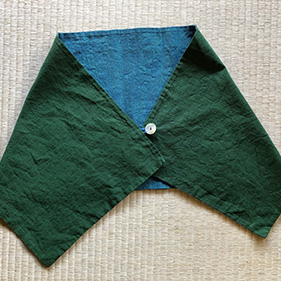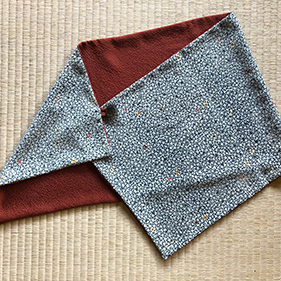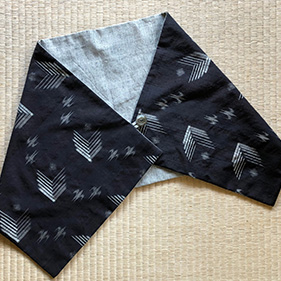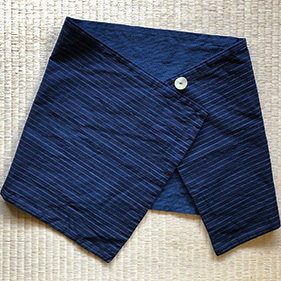
- “Aizu Momen”
- Aizuwakamatsu Fukushima
- Aizu Momen is a type of cotton textiles woven in Aizu Wakamatsu, a city located in the northeast part of the Japanese Archipelago. The beautiful stripes are the major characteristic for Aizu Momen.

- “Yuki Tsumugi”
- Yuki Ibaraki
- Yuki Tsumugi is a type of silk textiles woven with the silk yarn made from floss silk, which are spun from silkworm cocoons, while inheriting and handing down the technique, which has kept unchanged for 1500 years in the flow of time.

- “Ryukyu Bingata”
- Shuri Okinawa
- Ryukyu Bingata is a type of dyed textile that has been handed down for generations in Okinawa. Designs inspired by plants and landscapes of the tropical land colorfully decorate the cloth.

- “Ryukyu Kasuri”
- Haebaru Okinawa
- Kasuri is the weaving technique that utilizes the un-dyed parts of the tie-dyed strings and makes patterns by combining the colored and white parts.

- “Matsusaka Momen”
- Matsusaka Mie
- The history of textile in Matsusaka is also pretty long. The city of Matsusaka is located near the Ise-jingu Shrine that is believed to be the origin of the Japanese Shintoism.

- “Old textile”
- The term kofu, or the “old textile” refers to the textiles woven before the WWII.
Each of such textiles has the name of the production locations in their names, such as, Tango Chirimen or Kaga Yuzen.





